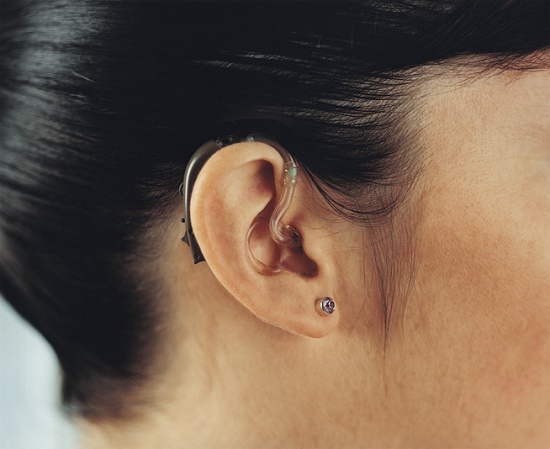
Have you ever had problems hearing in a crowded room or restaurant but can hear just fine at home? Do you have particular challenges hearing higher-pitched voices or TV dialogue?
If yes, you may have hearing loss, and hearing aids might be able to help you.
But how exactly do hearing aids work? Are they simple amplifiers, or something more elaborate?
This week we’ll be looking at how hearing aids work and how they are a bit more advanced than many people recognize. But first, let’s begin with how normal hearing works.
How Normal Hearing Works
The hearing process commences with sound. Sound is essentially a kind of energy that travels in waves, like ripples in a lake. Things make sound in the environment when they cause vibrations in the air, and those vibrations are ultimately captured and transferred to the ear canal by the outer ear.
Just after moving through the ear canal, the sound vibrations hit the eardrum. The eardrum then vibrates, creating and amplifying the original signal which is then transmitted by the middle ear bones to the snail-shaped organ of the middle ear known as the cochlea.
The cochlea is full of fluid and small nerve cells called cilia. The vibrations transferred from the middle ear bones agitate the fluid and stimulate the cilia. The cilia then transmit electrical signals to the brain and the brain interprets those signals as sound.
With most cases of noise-induced hearing loss, there is damage to the cilia. Consequently, the inbound signal to the brain is diminished and sounds appear quieter or muffled. But not all frequencies are evenly impaired. Generally, the higher-pitched sounds, such as speech, are affected to a greater degree.
In a raucous setting, like a restaurant, your ability to hear speech is weakened because your brain is receiving a compromised signal for high-frequency sounds. At the same time, background noise, which is low-frequency, is getting through normally, drowning out the speech.
How Hearing Aids Can Help
You can understand that the solution is not merely amplifying all sound. If you were to do that, you’d just continue drowning out speech as the background noise grows to be louder in proportion to the speech sounds.
The solution is selective amplification of only the frequencies you have difficulty hearing. And that is only possible by having your hearing professionally examined and your hearing aids professionally programmed to boost these select frequencies.
How Hearing Aids Precisely Amplify Sound
Modern hearing aids contain five interior parts: the microphone, amplifier, speaker, battery, and computer chip. But hearing aids are not just simple amplifiers—they’re sophisticated electronic devices that modify the attributes of sound.
This takes place via the computer chip. Everyone’s hearing is one-of-a-kind, like a fingerprint, and therefore the frequencies you need amplified will differ. The incredible part is, those frequencies can be established exactly with a professional hearing test, technically known as an audiogram.
Once your hearing professional has these numbers, your hearing aid can be programmed to amplify the frequencies you have the most difficulty with, maximizing speech recognition in the process.
Here’s how it works: the hearing aid picks up sound in the environment with the microphone and delivers the sound to the computer chip. The computer chip then converts the sound into digital information so that it can distinguish between assorted frequencies.
Then, depending on the programmed settings, the high-frequency sounds are amplified, the low-frequency background sounds are suppressed, and the enhanced sound is delivered to your ear via the speaker.
So will your hearing revert perfectly to normal?
While your hearing will not completely return to normal, that shouldn’t stop you from accomplishing major gains in your hearing. For most people, the amplification supplied is all they need to understand speech and participate in productive and effortless communication.
Think of it this way. If your eye doctor told you they could enhance your vision from 20/80 to 20/25, would you go without prescription glasses because you couldn’t get to 20/20? Of course not; you’d be able to function just fine with 20/25 vision and the improvement from 20/80 would be substantial.
Are you ready to discover the improvements you can achieve with modern hearing aids? Call us today!